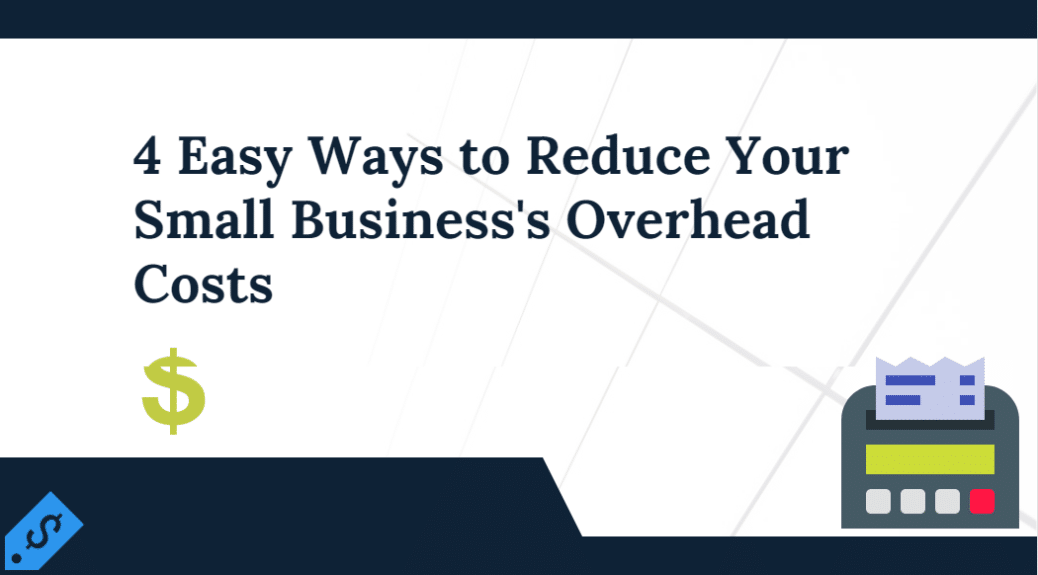Ways to Reduce Your Small Business’s Overhead Costs
Keeping your costs under control is very important if you own a small business. You’re probably operating on very tight margins already, so your operational costs strongly impact your profitability. Thankfully, there are tons of ways to save money, and it doesn’t always require massive changes to your operation. Instead, it’s usually a matter of identifying waste, using the right equipment in the right way, and making minor changes to how you do things. Here are some easy ways to reduce overhead costs of your small business.
Table of Contents
1. Pick Your Insurance Provider Wisely
Shopping around is essential when it comes to insurance for small business owners, so choose your provider carefully. Look at least three providers and their packages, and then compare quotes. Make sure that you check their reviews too, as this will give you an idea of the level of service and responsiveness you can expect. You may also want to look at what type of insurance for small business owners you need and if you’re getting unnecessary coverage. For instance, not all businesses need both business liability and professional liability insurance. So, review your policy and see if there are things you could take out.
2. Look for Different Providers
Shopping around is also very important when dealing with utility providers. If you’ve been with the same energy provider for many years, for instance, then there’s a strong chance you can find a better deal somewhere else. Don’t expect your energy company to give you a discount because you’ve been loyal to them. They care more about getting new clients than keeping old ones, so flex your purchasing power and start comparing quotes. You can do it manually or go through a comparison site. You can then use the quotes you’ve gotten to leverage negotiations with your current service provider.
3. Automate Processes to Reduce Overhead Costs
You need to look at your operation and see what you could automate. We’re not talking only about machinery here either. Things like marketing, tax reporting, deductions, invoicing, and task management can all be done through automation. For example, you could use an agile management tool like Kanban to set up tasks in advance and allow your employees to pull them in order of importance. Or you could use a CRM to send follow-up messages after clients have made specific actions. All of this will allow you to save time and money.
4. Outsource
Small businesses also need to understand the importance and power of outsourcing. If you have someone on your books to handle your IT 24/7, then there’s a strong chance that you could save by switching to a managed solution. The same goes if you’re handling things like payroll or accounting in-house. Only the most prominent companies have their accounting department, and even they will outsource sometimes, so don’t pay someone for a job that only requires a few hours of busy work per week.
5. Find a Commercial or Office Space That Is More Cost-Effective:
Most of the time, the process to reduce overhead costs are going to be made up of commercial or office premises. Check the dimensions of your facility as well as its location, and ask yourself if it truly satisfies the requirements that are most important to your company.
You might try cleaning up the clutter in your office and looking at renting a location with less square footage. It’s possible that you might move locations without a significant decrease in income or productivity. There’s always the possibility that some of your staff members could work from home instead.
6. Consider Leasing Instead of Purchasing:
Purchasing new machinery for your business represents a significant financial investment. You can choose to rent or lease it instead of saving the money if you’d rather not do so. Because of this, you are able to make use of the equipment without having to worry about making initial payments, maintaining it, or repairing it.
7. Reduce the Size of Your Team to Reduce Overhead Costs:
The salary of your employees are another key aspect that contributes to your overall overhead expenditures. It is always possible to lower the size of your workforce, particularly if you have determined that this change will not have an adverse effect on employee morale or output. Find employees who have a variety of skills and backgrounds, or invest in training and development so that you can fill gaps with existing employees; this is the best way to reduce the cost of employees; however, the best way to reduce the cost of employees is to make better hiring decisions in the first place.
8. Recognize the Benefits of Working Remotely:
As many of your overhead costs, such as monthly rent and utilities fees, are likely tied to the location of your physical office. Cutting your overhead costs and putting your company in an excellent position for the future can be accomplished by shifting to a culture of work that emphasizes remote work (while maintaining a small hub office for things like business meetings and interviews). Remote work is becoming more and more common.
9. Go paperless to Reduce Overhead Costs:
Even though it might not seem like a significant investment, paper and ink can pile up quickly, especially if your company deals with a wide variety of papers. Going paperless can save your company money and reduce overhead costs in business. Investigate the possibility of replacing paper-based business procedures with electronic ones.
These are all simple things that you could do today to reduce your overhead costs. Try to see if you implement any of these solutions in your organization, and always look for ways to save even more.

Adhar Dhaval is experienced portfolio, program and project leader with demonstrated leadership in all phases of sales and service delivery of diverse technology solutions. He is a speaker sharing advice and industry perspective on emerging best practices in project leadership, program management, leadership and strategy. He is working for the Chair Leadership Co.










